From the September 2022 issue of Apollo. Preview and subscribe here.
On a visit to the 1907 Colonial Exhibition taking place in the Bois de Vincennes on the far eastern side of Paris, the French president at the time, Armand Fallières, took satisfaction in the fact that the pavilions erected for the occasion looked as if they would last. ‘Unlike what generally happens in the exhibitions, we don’t have the regret of thinking of how much money had been spent without leaving a lasting mark,’ he is quoted saying in the newspaper La Dépêche coloniale illustrée.
More than a century has passed and vestiges of that exhibition still stand in what used to be the Colonial Trial Garden, before it became the Garden of Tropical Agronomy. They are in varying states of disrepair: for example, the wooden pavilion for Congo burnt down after an accident; the Moroccan pavilion is intact, if claimed by forest plants and graffiti artists; the red-and-white brick pavilion for Indochina was renovated by the municipality in 2011 and is used for events and exhibitions. Yet the durability of these structures, which were built to glorify French colonialism, inspire a sense of unease in those who are in charge of them today.
So far the city of Paris has opted for erasure, or avoidance; a dark green municipal sign at the entrance introduces the garden and what it has housed – agricultural trials, the exhibition, a hospital and a mosque (the first in France) – and says that the remains of these stand today in a ‘landscape of a mysterious atmosphere’. As the director of the Bois de Vincennes park, Éric Lamelot, tells me, ‘We are in something that reveals itself, or can be guessed in a slightly delicate manner.’
The establishment of the Paris trial garden (for testing and comparing new varieties of plants) in 1899 was at a time of European colonial expansion. The French administration drew inspiration from Kew Gardens in south-west London, described in a report commissioned by the Ministry of Colonies, as ‘a great botanic establishment [which] is rightfully considered one of the principal factors in the prosperity of British possessions’. The envoy, A. Milhe-Poutingon, director of the scientific journal Revue des cultures coloniales, went to Kew in 1898 and wrote admiringly of the role that the garden played in the imperial enterprises of quinine, coffee, tea and rubber. He concluded that France’s colonial gardens ‘are far from equalling similar institutions in England, in both number and importance’.
As a result, in greenhouses and outdoors, agronomists and engineers worked to acclimatise plants from the colonies in metropolitan France and studied how best to exploit nature in the colonies themselves. There were equivalent trial gardens set up in the colonies and plant specimens were sent between them.
As Françoise Vergès, author of Colonial Violence in the Public Space (2021), explains, the trials carried out in the Bois de Vincennes played a part in the imposition of monoculture crops, which have impoverished the soil, as well as the rolling-out of plantations that exploited local people and the patenting of medicinal plants to be sold at out-of-reach prices.
The information panels around the garden today tell a sanitised story of the studies once carried out there. There is no mention of the colonial mission they served or of the exploitation that happened on the site itself. On one panel, a visitor tried to fill in the blanks by adding an asterix and the comment ‘deported humans’ to the phrase ‘subjects of observation’. The panel in question is referring to a big greenhouse built in 1899 and the plant specimens that were brought in three months after its completion, but the visitor’s commentary could be referring to the garden of humans from colonised countries that was part of the 1907 exhibition for which the pavilions were built, and which attracted at least two million visitors.
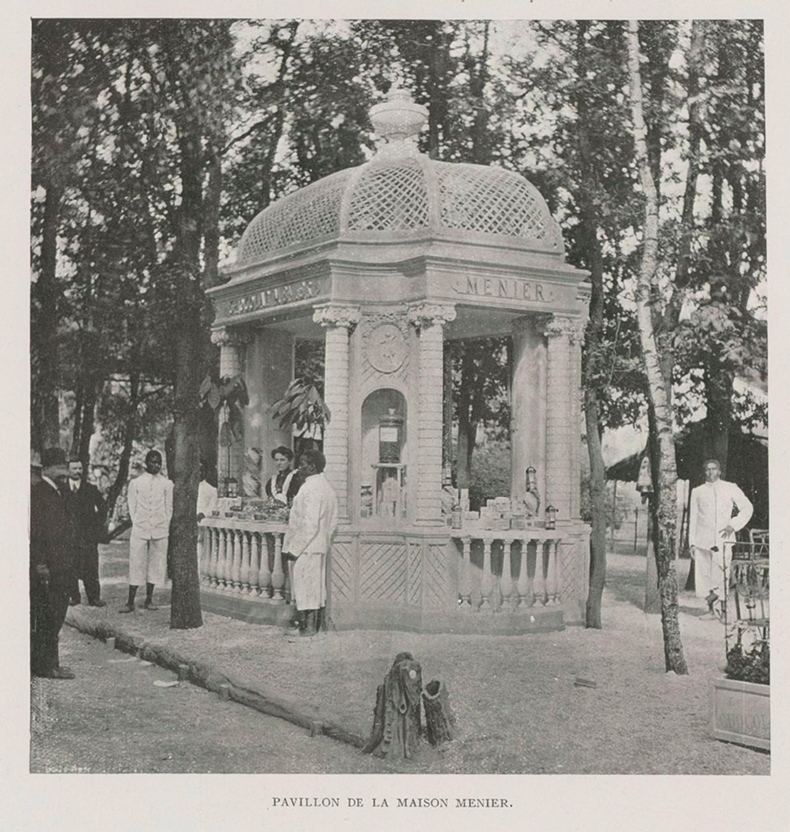
The Menier chocolate company’s pavilion at the Colonial Exhibition of 1907 in Paris. Photo: The Picture Art Collection/Alamy Stock Photo
For this human zoo, and other similar exhibitions that took place around that time, people from French colonies in Asia, Africa and the Carribbean were recruited as actors and paid a small amount of money, since slavery was illegal, explains the historian Sandrine Lemaire, co-author of Colonisation and Propaganda: the power of the image (2022). The salary hardly made it any less dehumanising and racist. ‘These are people that were exhibited as savages: they were exhibited as nude as possible, doing things that were as far as possible from what we do in Europe, effectively convincing the French by saying, “Look, they are so savage, there is really a need to civilise them,’’’ says Lemaire, adding that ‘a veritable hierarchy of races is established via the pavilions themselves’. Visitors were shown architectural masterpieces in the Indochina displays, such as the elaborate reproduction of the Angkor Wat temple complex in Cambodia for the 1931 exhibition; tea and coffee was served by indigènes from the Maghreb in pavilions supposed to represent their respective countries; children from African countries and Pacific islands were made to jump into pools to retrieve coins and peanuts thrown by visitors, even as temperatures dropped in October.
In July, I had lunch at the Tunisian pavilion with a Tunisian friend visiting Paris. After the colonial exhibition and a period as a ward of a hospital for the separate treatment of soldiers from the colonies during the First World War, it was used as a laboratory for agricultural research and then offices until 1990. It was then closed until its renovation in 2020. The walls and crescent-topped dome have been repainted shiny white and grey; a few Tunisian tiles remain above the doors. The space was taken up by a restaurant, La Belle Gabrielle, which advertises its food as organic and – unlike the crops that the garden was founded to cultivate – locally sourced. Lice, head chef with the association Food2rue, says that they didn’t want to go into the ‘controversies’ associated with the site and that they didn’t need to account for something that happened a century ago. Many of the women who work in the restaurant, a social enterprise, are of immigrant origin. ‘I would rather speak to a woman from Réunion about the difficulty she is having finding work or housing, rather than about history,’ she says.
A group of citizens from local heritage associations launched a petition earlier this year, calling on the mayor to ‘save’ the dilapidated pavilions and greenhouses. For Patrice Maire, a retired statistician and writer who created the petition, the site needs conserving because ‘it corresponds to a time when France shone’ and its industry was ascendant. He doesn’t find the exhibition problematic: ‘It is pleasant, we realise that there used to be an interest in civilisation,’ he says. The petition gathered only 1,128 signatures at the time of writing – and Maire says that his position is not an ‘endorsement of colonialism’ – but nostalgia for empire is gaining a more prominent place in French politics. The far-right Rassemblement National party won 89 seats in parliament and the party’s José Gonzalez, who was born in Oran, Algeria, opened the first parliament session with an ode to French Algeria. ‘Come with me to Algeria, I will find you a lot of Algerians who will say to you: “When are you coming back, you, the French?”’ he told journalists in a sideroom after his address, in response to a question about crimes committed by the French side during the Algerian war.
Such historical revisionism, unsurprising coming from the far-right, is normalised by the minimal addressing of colonial history in public space and debate. More than half of French people still think that colonisation was a good thing for Algeria, according to a recent poll. When the garden passed to the Paris city council in 2004, various ‘strands of its DNA’ were identified: agronomy and development, as well as the question of memory and the site’s colonial history. The city renamed the garden in honour of René Dumont, France’s first Green presidential candidate, who did research in the colonies and the garden as an agronomist but also denounced the disastrous ecological effects of French-imposed monoculture in his book about post-independence states, L’Afrique noire est mal partie (1962; published in English as False Start in Africa).

The Menier chocolate company’s pavilion at the Colonial Exhibition of 1907 in Paris. Photo: The Picture Art Collection/Alamy Stock Photo
Part of the garden has been turned into a community allotment run by an urban farming group called La Ville Fertile and buildings that were used by the colonial agronomy institutes (later federated under the French Agricultural Research Centre for International Development; CIRAD) have been passed on to organisations such as Agronomists and Vets without Borders and Fairtrade France, as well as the French office for the Intergovernmental Panel on Climate Change.
As for the strand concerning colonial history, Lamelot says that ‘the muncipality’ didn’t want to do anything spectacular: it would cost a lot of money – €3 million to restore each pavilion – and they wanted to avoid controversy. ‘[The panels] set out the facts – they don’t highlight points of reflections, or polemics,’ he says. When I ask why the panels don’t include the fact that people were exhibited as part of the 1907 exhibition – something that is documented in the on-site library run by CIRAD, and has been featured in French-produced documentary films and exhibitions, for example in 2012 at the Quai Branly museum and in a recent wall display just behind the town hall in the centre of Paris – he says: ‘We put that there were “animations’”… We didn’t want to go into contestable and contested notions. There is a place for that, but not necessarily on the panels.’
The awkwardness around this subject in general, says Lemaire, exists because the Republic betrayed its values of liberty, equality and fraternity in the colonies. ‘So, you can imagine, it’s complicated for the Republic to revisit that,’ she said, adding that the current president Emmanuel Macron has taken steps to deal with colonial memory in ways that his predecessors, who had direct links to colonialism, notably to French Algeria, had not.
This summer, the City of Paris put on a two-month outdoor exhibition about the legacy of the 1931 Colonial Exhibition that does go into the ‘contestable notions’ that it has hitherto avoided in its curation of the garden (until 26 September). The display highlights the exploitation of those exhibited, as well as the anti-imperial movements of that time that also opposed the event and the religious tones of the colonial mission, even after France’s law separating church and state in 1905.
Not far from the garden is the Palais de la Porte Dorée – another vestige of colonial propaganda (it was built for the 1931 event), which was turned into the Museum of Immigration in 2007. The art deco building is covered in an enormous bas-relief depicting the people of the colonies and the wealth of their lands. A reception room inside is covered in a mural with allegorical depictions of the ‘benefits’ that France brought to its colonies, such as peace, industry, freedom and justice. Many historians opposed the decision to make the building a museum of immigration, instead of a museum of colonialism, but the space has been used for conferences on colonial crimes, history and, in 2010, for a four-month occupation by hundreds of undocumented workers who were demanding the regularisation of their status in France. For Vergès, the protest created a link between past and present – ‘Shining a light on the racism of yesterday and today’, as she puts it – since many of those taking part would have ancestors that were colonised and dispossessed by France.
Back at the Garden of Tropical Agronomy René Dumont, on the sun-dappled terrace of La Belle Gabrielle, my friend enjoyed the lentil pattie and tomato and feta dip on offer, but felt there was a sort of deception going on. Suggesting that the building could also house a small museum, he said, ‘We shouldn’t be scared of memory. We can eat a vegetarian meal, all while being conscious of what this place was and the barbarism of what was done here.
From the September 2022 issue of Apollo. Preview and subscribe here.
Unlimited access from just $16 every 3 months
Subscribe to get unlimited and exclusive access to the top art stories, interviews and exhibition reviews.

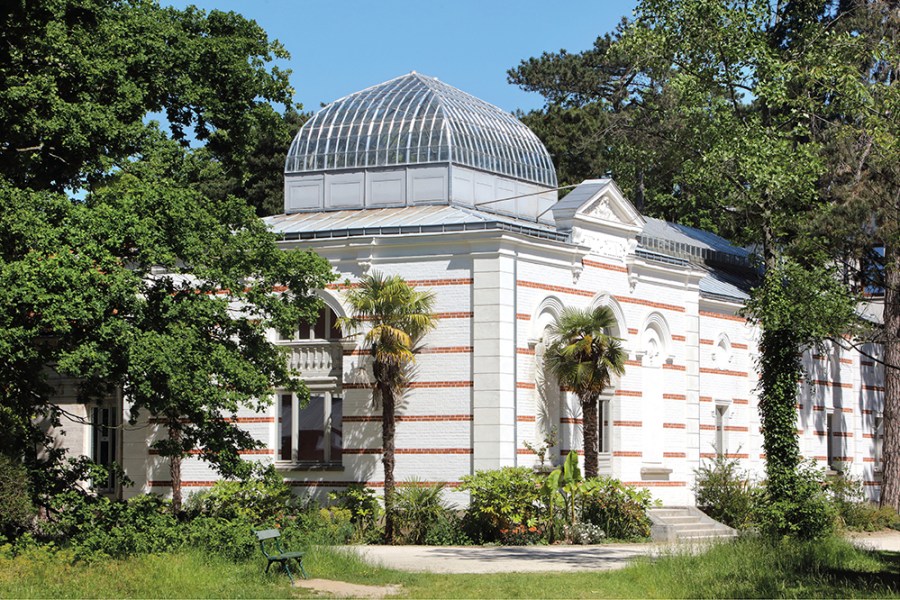
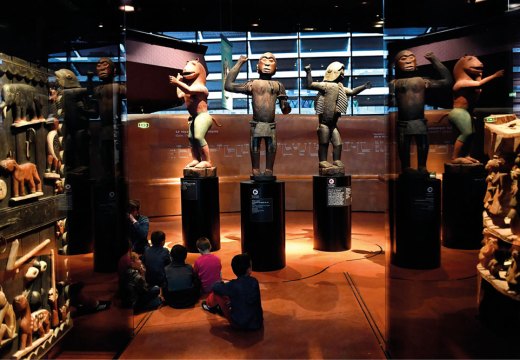
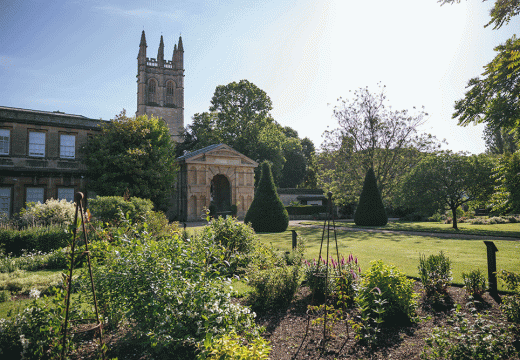
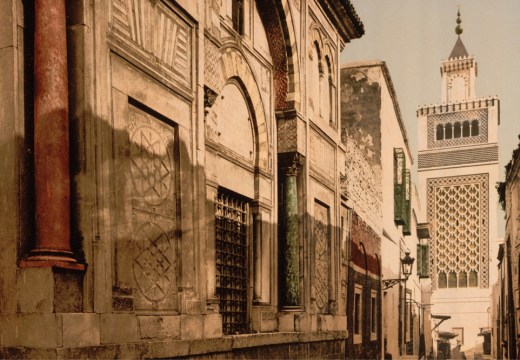









![Masterpiece [Re]discovery 2022. Photo: Ben Fisher Photography, courtesy of Masterpiece London](http://www.apollo-magazine.com/wp-content/uploads/2022/07/MPL2022_4263.jpg)
It’s time for the government of London to return to its rightful home